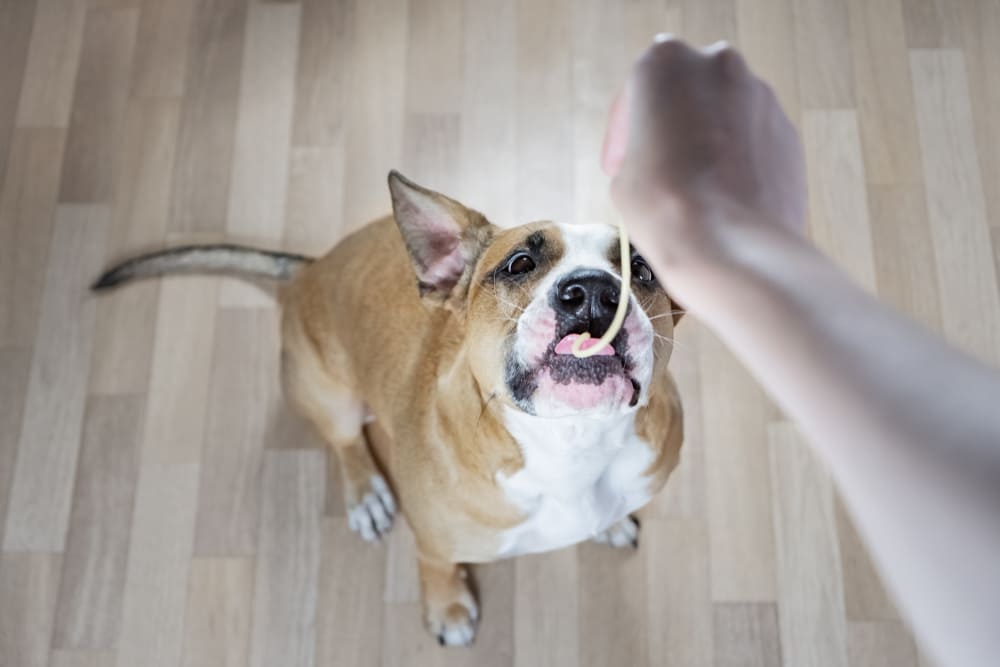When my Beagle-Lab mix, Max, snatched a stray noodle from a bowl of spaghetti (e.g., Barilla pasta, available at Whole Foods), I called my Seattle-based vet, Dr. Emily Carter. She confirmed that plain, cooked pasta is safe for dogs in moderation but warned about sauces and overfeeding. From tiny Chihuahuas to sturdy German Shepherds, here’s my guide, blending my experience with Max and Dr. Carter’s expertise, to help dog owners feed pasta safely.
Can Dogs Eat Pasta?
Yes, dogs can eat plain, cooked pasta in small amounts, says Dr. Carter. It’s safe but offers little nutrition. Max gets a rare noodle [1].
Do Dogs Love Pasta?
Dr. Carter says many dogs, like Beagles, enjoy pasta’s chewy texture. Max goes wild for plain spaghetti, but taste doesn’t mean health benefits [2].
Can Dogs Eat Spaghetti?
Yes, plain, cooked spaghetti is safe in moderation, says Dr. Carter. Avoid sauces with toxic ingredients like garlic for Pugs. Max gets plain noodles [3].
Can Dogs Eat Pasta Sauce?
No, pasta sauces often contain garlic, onions, or sugar, risking toxicity or upset in Yorkies, says Dr. Carter. Max avoids them [1].
Can Dogs Eat Pasta With Tomato Sauce?
No, tomato sauce may include toxic ingredients (e.g., garlic, onions) and sugar, risking upset in Chihuahuas, says Dr. Carter. Ripe tomatoes are safe in tiny amounts, but sauces are risky. Max skips it [2].
Can Dogs Eat Pasta With Butter?
No, butter’s high fat (~11g/tbsp) and lactose risk upset in lactose-intolerant Labs, says Dr. Carter. Max avoids it [3].
Can Dogs Eat Dry Pasta?
No, dry pasta is hard and risks choking or blockages in Border Collies, says Dr. Carter. Always cook pasta fully. Max only gets cooked [1].
Nutritional Value of Pasta for Dogs
Dr. Carter says cooked plain pasta (~100g) contains:
- Calories: ~130 kcal, high and carb-heavy.
- Carbs: ~25g, provides energy.
- Protein: ~5g, minimal benefit.
- Fiber: ~1g, minor digestive aid.
- Micronutrients: Trace manganese (~0.5mg), negligible.
Claims about significant iron or selenium are inaccurate; pasta offers minimal nutrients. Max’s diet relies on kibble (e.g., Blue Buffalo, available at Petco) [2].
What Are the Benefits of Feeding Pasta to Dogs?
Dr. Carter highlights minor benefits:
- Satiety: Carbs (~25g/100g) fill up Labs temporarily.
- Energy: Carbs provide quick energy for active Beagles.
Pasta isn’t nutritious; Max gets better benefits from kibble [3].
Side Effects of Pasta for Dogs
Dr. Carter lists risks for Max:
- Digestive Upset: Carbs cause gas or diarrhea in Pugs.
- Weight Gain: High calories (~130 kcal/100g) risk obesity in Golden Retrievers.
- Allergies: Rare wheat sensitivity in Chihuahuas causes itching.
Max had mild gas once [1].
Allergic Reaction to Pasta in Dogs
Dr. Carter says wheat allergies are rare but possible:
- Symptoms: Itching, rash, or diarrhea in Border Collies.
- Action: Stop feeding, call vet if severe.
Max had no allergies [2].
Dogs with Diabetes and Pasta
No, pasta’s high carbs (~25g/100g) risk sugar spikes in diabetic Labs, says Dr. Carter. Avoid or limit to a few noodles biweekly with vet approval. Max’s diabetic friend, a Beagle, skips it [3].
How to Feed Pasta to Your Dog
Dr. Carter’s tips for Max:
- Cook Thoroughly: Boil plain pasta (e.g., Barilla) until soft.
- No Additives: Avoid sauces, butter, or salt.
- Small Pieces: Break into bite-sized bits for Chihuahuas.
- Moderation: Offer sparingly, 1–2 times weekly.
Max gets plain, cooked noodles [1].
How Much Pasta Can a Dog Eat?
Dr. Carter’s guidelines (10% of daily calories, 1–2 times weekly):
- Small Dogs (e.g., Chihuahua, 5–10 lbs): 1/4–1/2 cup (~15–30g, ~20–40 kcal).
- Medium Dogs (e.g., Beagle, 15–39 lbs): 1/2–3/4 cup (~30–45g, ~40–60 kcal, Max’s limit).
- Large Dogs (e.g., German Shepherd, 40+ lbs): 3/4–1 cup (~45–60g, ~60–80 kcal).
More risks obesity or upset. Max gets minimal amounts [2].
What to Do if Your Dog Eats Pasta
Dr. Carter’s steps for Max:
- Plain Pasta: Monitor for mild upset; offer water.
- Sauces/Dry Pasta: Call vet or ASPCA Poison Control (888-426-4435).
- Symptoms: Watch for vomiting, lethargy, or itching.
- Vet Care: May need fluids or allergy treatment.
Max’s noodle theft required monitoring [3].
Pasta-Based Recipes for Dog Treats
Dr. Carter suggests:
- Pasta & Pumpkin Bites (makes 12 small treats, ~1-day serving for a 20-lb dog):
- 2 tbsp cooked, mashed plain pasta (e.g., Barilla).
- 2 tbsp canned pumpkin (e.g., Libby’s, available at Whole Foods).
- 1/4 cup oats (e.g., Quaker).
- Preparation:
- Mix ingredients, form 1-inch balls. Bake at 350°F for 15 min. Serve 1–2 treats/day, per size.
- Notes: Safe for Labs, no sauces. Store in fridge, use within 5 days.
Max loves these [1].
FAQs
- Do Dogs Love Pasta? Many do, but plain only.
- Can Dogs Eat Spaghetti? Yes, plain and cooked.
- Can Dogs Eat Pasta Sauce? No, toxic ingredients.
- Can Dogs Eat Dry Pasta? No, choking risk.
- Can Dogs Eat Pasta With Butter? No, lactose and fat risks.
Key Takeaways
- Plain Pasta Safe in Moderation: Cooked, no additives.
- Risks Include Upset: Sauces and carbs are dangerous.
- Monitor Reactions: Watch for allergies or obesity.
- Vet Approval: Consult for health conditions.
Final Thoughts
Max’s spaghetti heist taught me to stick to plain noodles and small portions, thanks to Dr. Carter’s advice. Dog owners can find pasta at Whole Foods but should prepare it carefully for any breed, from Pomeranians to Mastiffs. Choose safer treats like pumpkin bites, monitor for issues, and consult your vet for a healthy pup!
References:
[1] PetMD, “Foods Safe for Dogs”.
[2] AKC, “Safe Dog Treats”.
[3] AVMA, “Pet Nutrition and Safety”.


